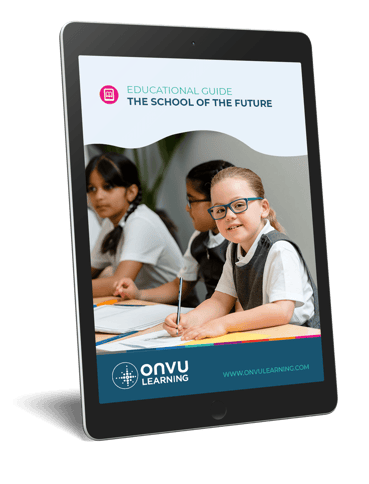- Lesson Observation
- 2 Minute Read


This article rounds off the series by looking at how ONVU Learning’s system with 360-degree video is uniquely suited to delivering the maximum benefits of a lesson observation programme.
Over the past few months, we’ve shared our research, experience and thoughts on how best practice in lesson observation can drive a school forward, change the culture and improve teaching and learning.
Our articles have covered the following topics… please click on each link to re-read the articles or subscribe to our newsletter to get the whole series as a white paper soon.
—–
ONVU Learning was developed by teachers for teachers. As a result, our discreet always-on system it is entirely focused on helping teachers review all aspects of a lesson. In practice, this means these 5 reasons:
There’s no need to bring a camera into the classroom at the start of a lesson – with the distractions this brings to a class and the chance that the battery isn’t charged up. Even if you didn’t plan to record the lesson, you can ‘go back in time’ and take a look at key incidents.
Some lesson study programmes suggest having two or more observers in the room to make the most of lesson observations. But this inevitably influences the classroom dynamics – even if there is enough space to fit them all! ONVU Learning lesson observations can be reviewed by multiple observers (with teacher permission) at the same time or whenever and wherever convenient.
ONVU Learning uses the latest technology from parent company ONVU Technologies, to give a full 360-degree video view of a classroom along with high-quality audio. That allows teachers to zoom in to see how students are responding to tasks, listen to their responses to questioning and even view two parts of the room at the same time!
In all the schools we work with teachers control access to their footage (except in the case of a serious safeguarding issue). This changes the culture of the school – senior leaders have told us of staff keen to share successes as well as asking for help with specific issues.
Footage is stored externally and can be shared (with permission) with external experts – for example, our specialist coaches, SEN experts in other parts of a MAT or university-based ITT mentors. The Early Career Framework will offer recently qualified teachers more mentoring and the ability to deliver this remotely should save schools a lot of money!

The School of the Future Guide is aimed at helping school leaders and teachers make informed choices when designing the learning environments of the future using existing and upcoming technologies, as they seek to prepare children for the rest of the 21st century – the result is a more efficient and competitive school.
KEEP IN TOUCH WITH ONVU LEARNING AND RECEIVE THE LATEST NEWS ON EDTECH, LESSON OBSERVATION, AND TEACHER TRAINING AND DEVELOPMENT.